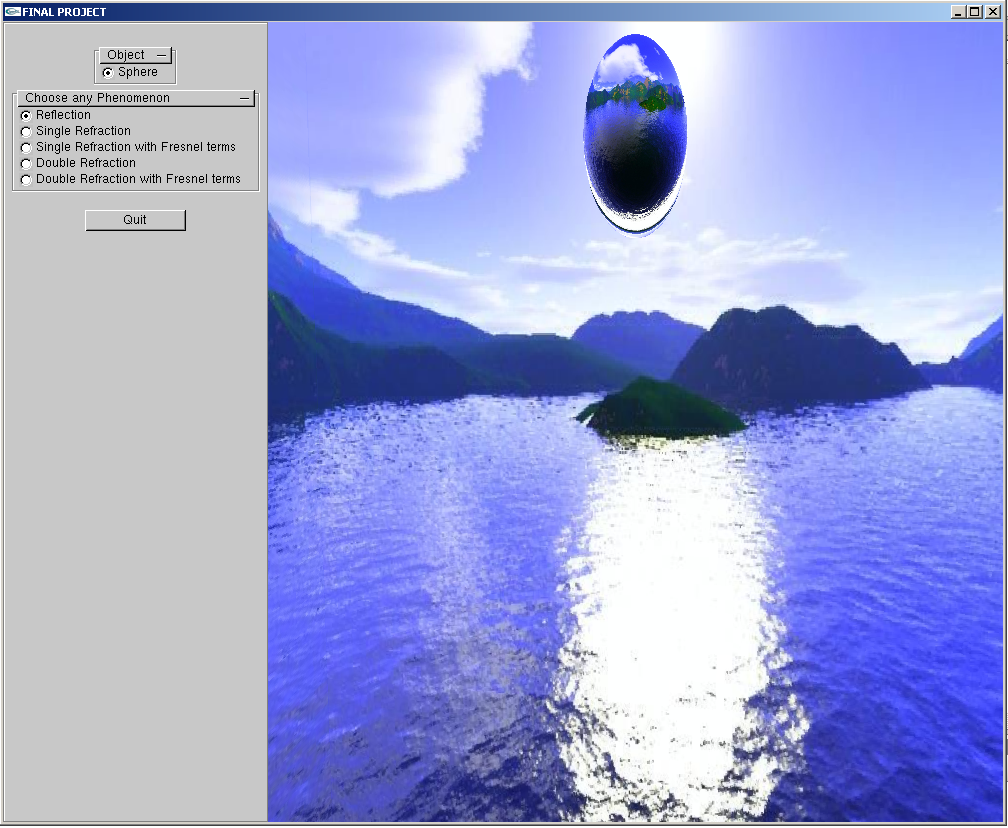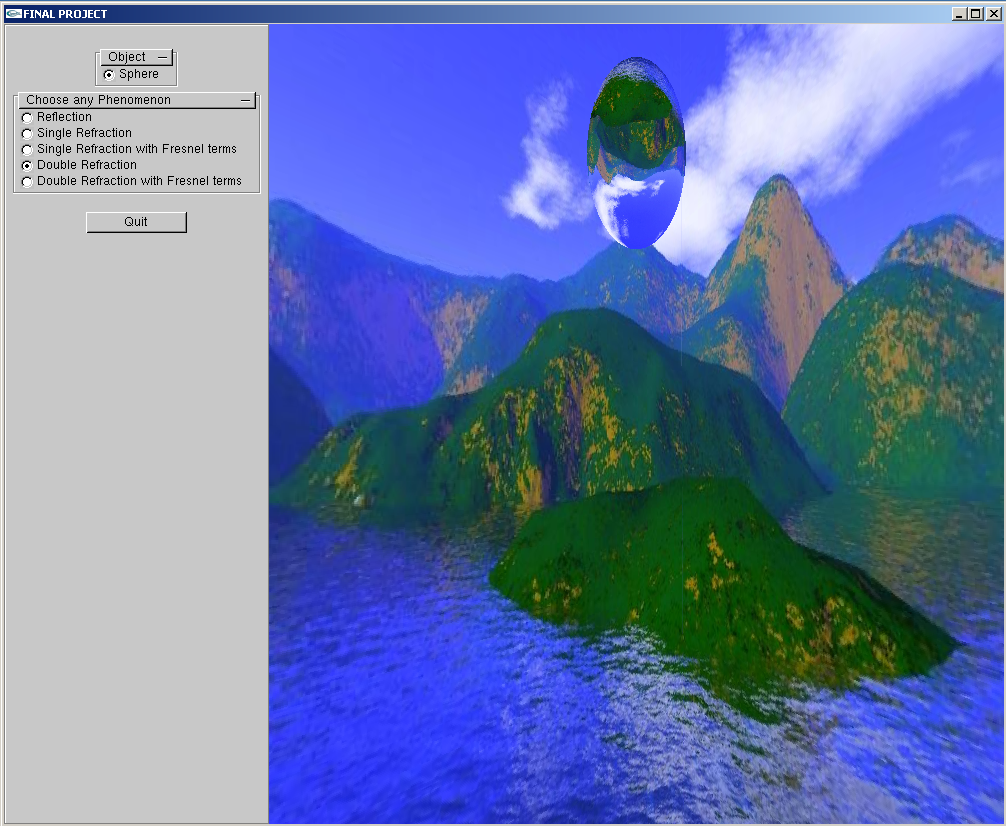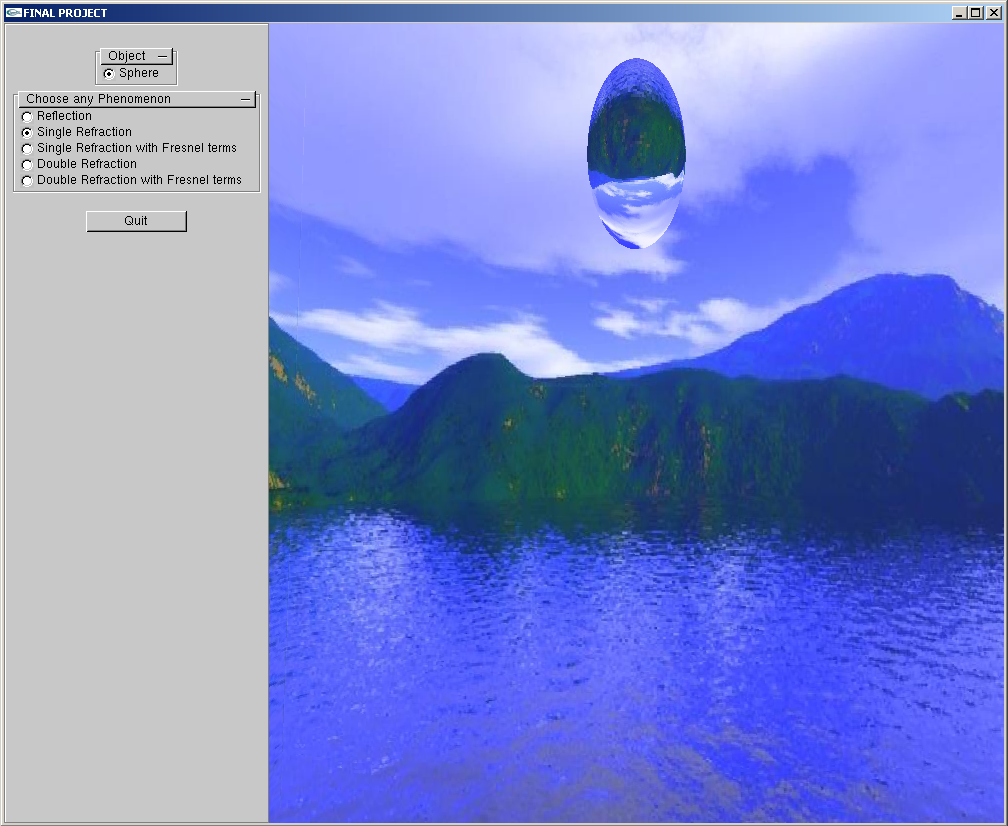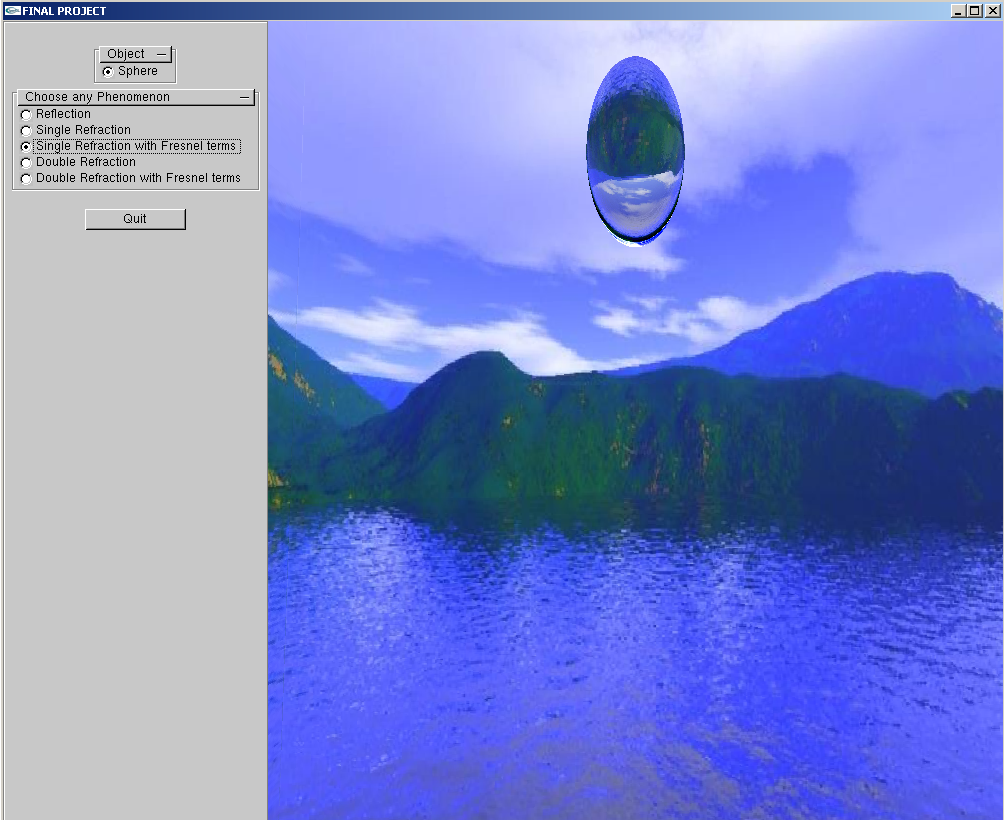Advanced Computer Graphics I (CS6610)
In this course I explored advanced graphics topics, utilizing the features in the OpenGL graphics library. The textbook I referred was the “OpenGL Programming Guide” and lots of handouts consisting of research papers where graphics ideas were presented. For my final project I implemented a paper from the SIGGRAPH proceedings.
Assignment No1:
I wrote an OpenGL program which renders an animated, anthropomorphic figure. I used hierarchical modeling to achieve the desired animation effect. I added a GLUI interface that would stop/start the figure walking, control the translation of the figure and control the speed of walking of the figure. I also implemented picking operation that allowed mouse movements to move the limb, constrained by the joint.
Assignment No2:
In this assignment I included a 4-sided room such that one wall does not appear using culling concept, multi-textured the floor using multi-texturing concept of OpenGL with the wood-floor texture and lightmap texture provided to us, added a white point light source (positional) using the OpenGL lighting model, placed a white emissive semi-transparent cone which was texture mapped with the image of the earth texture, placed perfectly reflective sphere balanced on the cone which was environment map using cube mapping. I also used mip-mapping of the textures included in the program.
Assignment No3:
I created room and placed a cone at the center of the room and balanced a sphere on that. I also rendered double-linked tori which were floating above the floor. I implemented projective shadow algorithm as well as shadow map and shadow volume algorithms to display shadows of the objects in the room. I provided a simple GLUI interface to allow the user to switch between the types of the shadows.
Assignment No4:
The assignment 4 was experimenting with the shaders. I first created a floor and then a wriggling snake using sin function. I used GLSL shading language to bump map the floor and the snake. I provided a GLUI interface to control the number of 'wriggles' (wavelengths) along the length of the snake body and also the speed of wriggling.
Final project
Download: Report
My final project was an implementation of the paper "An Approximate Image-Space Approach for Interactive Refraction" by Chris Wyman. Chris Wyman’s paper presents an algorithm that allows refraction of a distant environment through two interfaces. I had used GLSL shading language to implement the refraction concept.

Above screen shot shows reflection.
Above screen shot shows single refraction.
Above screen shot shows single refraction with fresnel terms.

Above screen shot shows double refraction.

